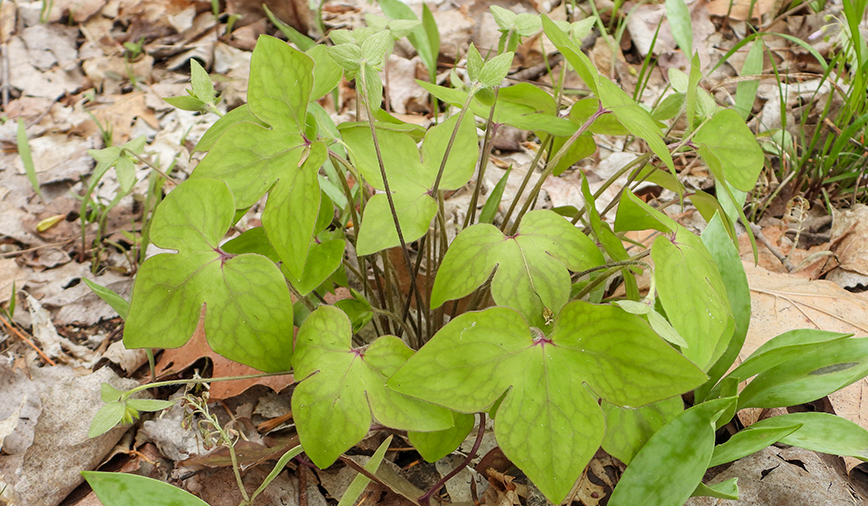March 12, 2012
Even though this winter has been anything but wintry, I think it’s safe to say we’re all in the mood for spring. In honor of this spring-forward weekend, and to maybe take your mind off the hour you’re about to lose, try to find a few minutes to take in these undeniable signs that spring has sprung:
Woodpeckers are drumming incessantly on anything they can find that produces resonance. A downy woodpecker behind my house has been whacking a dead box elder branch for more than a month now, and I received a call just the other day from a person wondering what to do about the woodpecker that has discovered just how mighty he can sound whilst drumming on an aluminum gutter.
Woodcock, the subject of last week’s column, have taken up residence in many local wetlands. Besides the wet field behind Hickory Knolls, they’ve been heard conducting their sunset performances at Ferson Creek Fen, Leroy Oakes Forest Preserve and several other high-quality wetlands throughout Kane County.
Skunk cabbage, the earliest blooming of our native wildflowers, has been up for a while now. If you happen to be heading to Ferson Creek Fen for woodcock-viewing, plan to arrive a little earlier than dusk, so you’ll have enough light to spot the skunk cabbage patch near the first (or western-most) viewing platform along the south trail, which also is known as Icehouse Road.
Hepatica, another early bloomer, is changing its liver-colored leaves to green, a sign that buds will soon be forming. Look for hepatica in rich woodlands like Norris Woods in St. Charles; you can also find hepatica at Hickory Knolls, on the eastern slope of Water Tower Hill.
Chorus frogs have been reported testing out their vocal sacs on warm days. Wind is tough on these little guys, and we’ve had a lot of it lately. But if they can find a sheltered spot in an ephemeral pond—their preferred habitat—they will come together to produce their namesake chorus day and night.
Page 1 of 2 Robins have been sighted just about everywhere, and their numbers seem to be growing daily. None of them are singing yet, at least not that I’ve heard, so it’s tough to tell whether these birds are here to stay, or are still on their journey to points north. But it’s still fun to see this quintessential sign of spring performing its quintessential behavior—pulling earthworms from the ground. (Yep, it’s been that balmy—the ground is worm-warm already.)
Love is in the air for several species of birds of prey. Hickory Knolls’ resident redtail, the hawk that was just a youngster when we moved in last March and has spent the last year living solo, seems to have a suitor. The two birds have been spotted in flight together almost daily for a couple of weeks now. Just yesterday we saw them circling after each other high in the sky, emitting some chirpy mating calls along with the occasional “keeeeeeer.” (If you’ve learned your bird calls by watching movies, you may at first think the redtail is imitating a bald eagle. But that’s not the case. Somewhere along the way, Hollywood sound guys decided that the redtail’s call was a much more suitable sound for our nation’s symbol than its actual call, which is a wimpy sounding squeak.)
Speaking of bald eagles, the pair that calls Mooseheart home have built a new nest (you may remember, their nest last year fell victim to a summer storm) and are well on their way to raising a new family again this year. Mom and Pop can frequently be spotted soaring between the Mooseheart property and the Fox River in Batavia and North Aurora.
I could go on and on about the signs nature is giving that a change of seasons is upon us, but that would easily waste even more precious minutes at a time when your weekend is already being cut short. Instead, take this challenge: Head outside yourself to see and hear, and even smell, the signs of spring that surround us. Count how many you come up with in a half hour’s time. Ten? You’re pretty good. Twenty? You’re more observant than most. Thirty or more? That’s actually a sign in itself—a sign that you’re a true nature nerd.
It takes one to know one.
Nature nerd Pam Otto is the manager of nature programs and interpretive services for the St. Charles Park District. She can be reached at 630-513-4346 or potto@stcparks.org.
Page 2 of 2

